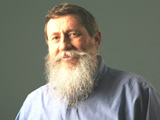Beit Midrash
- Shabbat and Holidays
- Purim & The Month of Adar
- The Month of Adar
- Sections
- Peninei Halakha
Some have a custom to give a coin worth half of the local currency unit, while others give three such coins, corresponding to the three times the word teruma ("donation") appears in Parashat Shekalim (Rema 694:1). Thus, according to this custom, one should donate three half-shekels if in Israel, and $1.50 if in the US.
Some customarily give the equivalent of the original half-shekel, which is the value of approximately ten grams of pure silver (Kaf Ha-ĥayim 694:20). All of these customs are valid, and the more charity one gives, the more commendable he is.
Some maintain that this custom applies only to men above the age of twenty, because only they were obligated in the original mitzva to give the half-shekel for public offerings (Rema). Others maintain that boys above the age of thirteen must observe this custom as well (Tosafot Yom Tov). A third opinion maintains that one should give a donation in commemoration of the half-shekel for young children as well (Eliya Rabba, MB 694:5). Still others maintain that even women should give the half-shekel donation (Kaf Ha-ĥayim 694:27). The most prevalent custom today is to donate at least one half-shekel for every member of the house, even for an unborn child.
One should not use money that was designated for ma’aser kesafim (the tithe of one tenth of one’s income that is set aside for charity) for this donation, since one may not fulfill an obligatory mitzva or custom from tithes. However, if one has always donated the commemorative half-shekel according to the most expensive custom and is now pressed for funds, making it difficult to observe his custom without relying on ma’aser kesafim money, he may donate from his own funds according to the more lenient opinion – that is, a half-shekel per male above the age of twenty – and make up the rest with ma’aser kesafim money.























